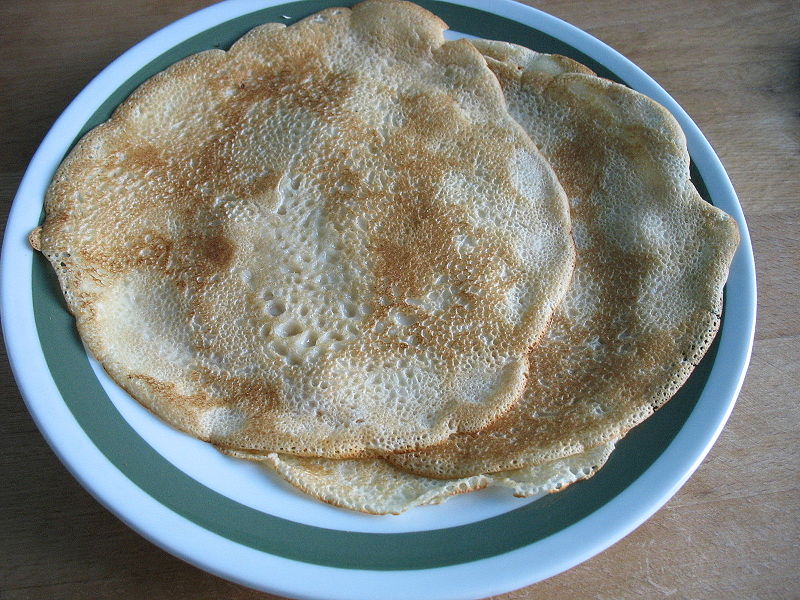BLINI (AK-ruh)
A
thin Russian pancake
Common clues: Russian
pancakes; Buckwheat pancakes; Shrovetide dish; Thin pancakes;
Pancakes served with sour cream
Crossword
puzzle frequency:
Once a year
News: St.
Petersburg's Pancakes: Shrove Tuesday in Style
Video:
Blini:
Russia's Fast-Food Frenzy
A blintz, blintze, or blin (plural: blintzes, blini, or blinchiki) is a thin pancake. It is somewhat similar to a crêpe with the main difference being that yeast may be used in blini, but not in crêpes.

The English word blintz comes from the Yiddish בלינצע ("blintze), which in turn comes from blin. "Blin" comes from Old Slavic mlin, which means "to mill".
Blini had a somewhat ritual significance for early Slavic peoples in pre-Christian times since they were a symbol of the sun, due to their round form. They were traditionally prepared at the end of winter to honor the rebirth of the new sun (Butter Week, or Maslenitsa). This tradition was adopted by the Orthodox church and is carried on to the present day. Blini are also served at wakes to commemorate the recently deceased.
Traditional Russian blini are made with yeasted batter, which is left to rise and then diluted with cold or boiling water or milk. When diluted with boiling water, they are referred to as zavarniye blini. The blini are then baked in a traditional Russian oven. In fact, the process of cooking blini is still referred to as baking in Russian, even though these days they are almost universally pan-fried, like pancakes. French crêpes made from unyeasted batter (usually made of flour, milk, and eggs) are also not uncommon in Russia, where they are called blinchiki and considered to be a borrowed dish. All kinds of flour may be used for making blini: from wheat and buckwheat to oatmeal and millet, although wheat is currently the most popular by far.
Blintzes were popularized in the United States by Jewish immigrants who used them in Jewish cuisine. While not part of any specific religious rite in Judaism, blintzes that are stuffed with a cheese filling and then fried in oil are served on holidays such as Chanukah (as oil played a pivotal role in the miracle of the Chanukah story) and Shavuot (when dairy dishes are traditionally served within the Ashkenazi minhag).
Blini may be prepared and served in three basic ways.
They may be eaten as-is. In this case, the batter may contain various add-ins, from grated potato or apple to raisins. These blini are quite common in Eastern Europe and are more solidly filled than the spongy pancakes usually eaten in North America.
They may be smeared with butter, sour cream, jam, honey, or caviar (whitefish, salmon, or traditional sturgeon caviar, although the latter is not kosher and therefore not used in Jewish cuisine) and then they might be folded or rolled into a tube. In rolled form they are similar to French crêpes. The caviar filling is popular during Russian-style cocktail parties.
A filling such as jam, fruit, potato, cottage cheese or farmer cheese, cooked ground meat, cooked chicken, and even chopped mushrooms, bean sprouts, cabbage, and onions (for a Chinese eggroll-type blintz) is rolled or enveloped into a pre-fried blintz and then the blintz is lightly re-fried, sautéed, or baked.
This article is licensed under the GNU Free Documentation License. It uses material from the Wikipedia article "Blini".
|
|